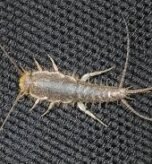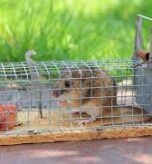Cockroaches are among the most persistent and undesirable pests found in residential and commercial environments. Their presence not only causes discomfort but also poses significant public health risks due to their ability to spread disease-causing organisms and trigger allergies. To get rid of cockroaches effectively, one must first have a thorough understanding of their biology, habits, and the most appropriate control strategies.
Understanding Cockroaches
Belonging to the insect order Blattodea, cockroaches can grow up to 50 mm in length, particularly in tropical regions. They are identified by their flat, oval-shaped bodies, six spiny legs, and long, twitching antennae. While some species possess wings, most prefer crawling into dark, moist areas, utilizing their oily exoskeletons to slip into the tiniest crevices.
What Attracts Cockroaches
Cockroaches are primarily attracted to homes by four essential factors: food, water, warmth, and shelter. An infestation can occur in even clean homes if these conditions are met. Common attractants include food crumbs, uncleaned dishes, unsealed food containers, garbage, pet food left out, and grease accumulation. Leaky pipes, standing water, and damp environments also draw them in. For shelter, they seek warm, dark, cluttered spaces like cracks, crevices, behind appliances, and inside cabinets. You may even find them attracted to unusual items such as wallpaper paste, book bindings, scented candles, soap residue, and pet litter boxes. Strong odors, including sweet, greasy, fermented, and protein-rich smells, are particularly appealing to them.
Common Cockroach Species
Globally, there are thousands of cockroach species, with several commonly found in homes.
German Cockroach (Blattella germanica)
This is the most prevalent indoor species, measuring about 13 to 16 mm. Identified by a pale brown color with two dark stripes behind their heads, German cockroaches reproduce rapidly. They produce significantly more eggs than other species, making them particularly challenging to eradicate. This species does not fly.
American Cockroach (Periplaneta americana)
As the largest domestic cockroach, this species can grow up to 53 mm. It has a reddish-brown color and light yellow bands behind its head. Preferring warm, humid environments, they can fly and often enter buildings through lower levels and sewers.
Blatta orientalis (American Cockroach)
These are large, dark-colored insects that cannot fly. Commonly found in sewers and humid, dirty places, they also enter buildings via lower levels.
Brown-banded Cockroach (Supella longipalpa)
This small cockroach is light brown with faint V-shaped bands. It prefers drier, warmer areas, often taking shelter in computers and other electrical equipment.
How Cockroaches are Harmful to Humans
More than a nuisance, cockroaches are a significant health hazard. They carry bacteria and viruses on their bodies and spread diseases through their droppings, which contaminate food and surfaces. Diseases associated with cockroaches include cholera, dysentery, salmonellosis, E. coli, leprosy, and plague. Their droppings, saliva, and shed skin can also trigger allergies and asthma attacks, especially in children and older adults. In rare cases of severe infestation, some species may even bite humans.
Cockroach Behaviour
Cockroaches are primarily nocturnal, meaning they are most active at night while searching for food, water, and shelter. If you see cockroaches during the day, it often indicates a significant infestation where overcrowding has forced them out of their hiding spots. They tend to aggregate in kitchens and bathrooms and live in loose groups rather than organized nests.
Detecting a Cockroach Infestation
Early detection is crucial for effective cockroach control.
Signs of Infestation
Look for these common signs:
- Egg Capsules (Ootheca): Dark brown and oval, these cases indicate active breeding.
- Droppings: These resemble black dust, pepper, or coffee grounds, and vary in size and length.
- Unusual Odor: A musty, oily, or semi-sweet smell indicates a significant infestation due to cockroach pheromones.
- Shed Skin: Cockroaches shed their skin multiple times as they mature, leaving clear signs of their presence.
- Smear Marks: Horizontal brown-colored marks appear in humid areas where roaches travel.
- Damage: Look for unusual damage to food packaging or furniture.
Where to Check for Cockroaches
Cockroaches prefer dark, warm, and humid hiding spots. Key areas to inspect include:
- Behind and under appliances (refrigerators, stoves, washing machines).
- Under sinks and inside cabinets, especially near leaks.
- Inside drains and pipes.
- Cracks and crevices in walls or floors, particularly near food storage.
- Cardboard boxes and clutter.
- Unused storage spaces like attics or storerooms.
- Around food preparation areas and garbage cans.
- In dark, cool spaces like cellars.
Monitoring for Cockroaches
Sticky traps or insect monitors are effective tools for locating harborage areas and estimating population levels. Place them in suspected high-activity areas like behind appliances, under sinks, or near water heaters. Regular inspection of these traps (e.g., weekly or monthly) helps track changes in activity and assess treatment effectiveness. Note the number of cockroaches caught and their sizes, as many small nymphs indicate an active infestation.
Prevention is Key
Preventing cockroaches from entering and thriving in your home is the most cost-effective and sustainable control method.
Sanitation and Hygiene
Maintaining a clean environment is paramount.
- Cleanliness: Regularly wipe down surfaces, sweep, and vacuum floors to remove food crumbs and spills. Focus on cleaning kitchens before bed.
- Dishes: Wash dishes every night and avoid leaving them in the sink.
- Food Storage: Store all food, including pet food, in tightly sealed, airtight containers. Avoid leaving ripe fruit or uncovered snacks out.
- Waste Management: Empty indoor garbage cans regularly and use tight-fitting lids. Clean trash cans frequently and keep outdoor bins away from building entrances.
Sealing Entry Points
Block access points to your home.
- Cracks and Gaps: Seal cracks and holes in walls, floors, and around pipes with caulk.
- Doors and Windows: Install tight-fitting weather stripping, screens, and door sweeps to restrict entry.
- Inspect Deliveries: Check grocery items and cardboard packaging before bringing them indoors.
Reducing Water Sources
- Fix Leaks: Promptly repair leaky faucets, pipes, and any sources of standing water.
- Dry Areas: Ensure bathrooms, sinks, and other wet areas are kept dry, especially overnight.
Clutter Management
Reducing clutter removes hiding spots.
- Clear Clutter: Dispose of piles of cardboard, newspapers, and unused boxes.
- Organization: Keep closets and pantries organized, and use shelves to keep items off the floor.
Effective Control Methods
Once an infestation is present, a combination of methods may be necessary for complete eradication.
DIY Home Remedies
Many natural remedies can help manage small infestations or act as deterrents, though they may not be sufficient for large-scale problems.
- Boric Acid: This effective powder kills cockroaches by attacking their nervous system. Dust a thin layer in dry corners and crevices, keeping it away from children and pets.
- Diatomaceous Earth (DE): Food-grade DE damages the cockroach’s exoskeleton, leading to dehydration. Sprinkle it around entry points and behind appliances.
- Baking Soda + Sugar: A mixture of sugar to attract and baking soda to kill cockroaches when ingested.
- Neem Oil: Mix neem oil with water for a spray or sprinkle neem powder in infested areas.
- Peppermint Oil: Acts as a natural repellent when mixed with saltwater and sprayed in infested areas.
- Bay Leaves: The strong scent of crushed bay leaves repels cockroaches.
- Fabric Softener Spray: A mixture of fabric softener and water can suffocate cockroaches on direct contact.
Professional Pest Control
For moderate to severe infestations, professional pest control is often the most effective and long-lasting solution.
- Gel Baits: These are highly effective for targeting entire colonies. Cockroaches consume the bait and transfer the slow-acting poison to others.
- Sprays: While offering immediate knockdown, sprays are often temporary and may not reach hidden nests.
- Dusts: Professionals use insecticidal dusts like boric acid, which are applied to crevices and wall voids for long-term effectiveness.
- Traps: Sticky traps are primarily used by professionals for monitoring and locating harborage areas.
- Fumigation and Tenting: Reserved for severe infestations, this method involves sealing the home and releasing a gas to kill both adult cockroaches and their eggs.
- Integrated Pest Management (IPM): This comprehensive approach combines prevention, non-chemical methods, and targeted, low-risk pesticides for long-term control.
When to Call a Professional
It is advisable to contact a professional pest control service as soon as signs of cockroach activity are noticed. This is particularly important for:
- Visible Sightings: Seeing roaches during the day suggests a severe infestation.
- Persistent Infestations: DIY methods have not effectively controlled the problem.
- Health Concerns: Given the health hazards, prompt professional intervention is critical.
- Complex Scenarios: In apartments or when dealing with hard-to-reach nests, professional expertise is essential.
Professional services offer expertise in identifying the specific cockroach species, determining the extent of the infestation, and applying tailored, safe, and effective treatments.
Conclusion
Cockroaches are resilient pests that require diligent and often multifaceted approaches for effective management. While numerous home remedies offer temporary relief, severe infestations typically necessitate professional intervention. Implementing rigorous sanitation practices, sealing entry points, and eliminating water and food sources form the foundation of any successful cockroach control strategy. For enduring, comprehensive results, engaging a professional pest control service that employs Integrated Pest Management principles is the best way to ensure a hygienic and pest-free living environment.



